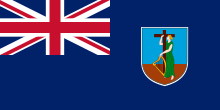
Montserrat is a British Overseas Territory in the Caribbean. It is part of the Leeward Islands, the northern portion of the Lesser Antilles chain of the West Indies. Montserrat is about 16 km (10 mi) long and 11 km (7 mi) wide, with roughly 40 km (25 mi) of coastline. It is nicknamed "The Emerald Isle of the Caribbean" both for its resemblance to coastal Ireland and for the Irish ancestry of many of its inhabitants. Montserrat is the only non-fully sovereign full member of the Caribbean Community and the Organisation of Eastern Caribbean States.
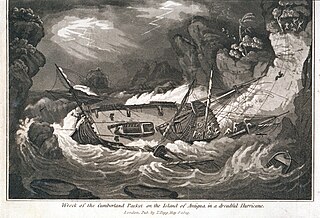
The history of Antigua and Barbuda covers the period from the arrival of the Archaic peoples thousands of years ago to the present day. Prior to European colonization, the lands encompassing present-day Antigua and Barbuda were inhabited by three successive Amerindian societies. The island was claimed by England, who settled the islands in 1632. Under English/British control, the islands witnessed an influx of both Britons and African slaves migrate to the island. In 1981, the islands were granted independence as the modern state of Antigua and Barbuda.

The history of the Caribbean reveals the significant role the region played in the colonial struggles of the European powers since the 15th century. In the modern era, it remains strategically and economically important. In 1492, Christopher Columbus landed in the Caribbean and claimed the region for Spain. The following year, the first Spanish settlements were established in the Caribbean. Although the Spanish conquests of the Aztec empire and the Inca empire in the early sixteenth century made Mexico and Peru more desirable places for Spanish exploration and settlement, the Caribbean remained strategically important.

Indentured servitude is a form of labor in which a person is contracted to work without salary for a specific number of years. The contract, called an "indenture", may be entered voluntarily for purported eventual compensation or debt repayment, or it may be imposed involuntarily as a judicial punishment. Historically, it has been used to pay for apprenticeships, typically when an apprentice agreed to work for free for a master tradesman to learn a trade. Later it was also used as a way for a person to pay the cost of transportation to colonies in the Americas.

Coolie is a pejorative term used for low-wage labourers, typically those of Indian or Chinese descent.
Redleg is a term used to refer to poor whites that live or at one time lived on Barbados, St. Vincent, Grenada and a few other Caribbean islands. Their forebears were sent from England, Scotland, Ireland, and Continental Europe as indentured servants, forced labourers, or peons.
Indo-Caribbeans or Indian-Caribbeans are people in the Caribbean who are descendants of the Jahaji indentured laborers from India and the wider subcontinent, who were brought by the British, Dutch, and French during the colonial era from the mid-19th century to the early 20th century. A minority of them are descendants from people who immigrated as entrepreneurs, businesspeople, merchants, engineers, doctors, religious leaders and other professional occupations beginning in the mid-20th century.

Slavery in the British and French Caribbean refers to slavery in the parts of the Caribbean dominated by France or the British Empire.

The coat of arms of Montserrat consists of an escutcheon (shield) charged with a woman in a green dress holding a golden harp and a black cross. In use since at least 1909, it has been the official coat of arms of the Caribbean island of Montserrat since the island became a British Crown colony in 1962. The escutcheon is featured on the flag of the territory.
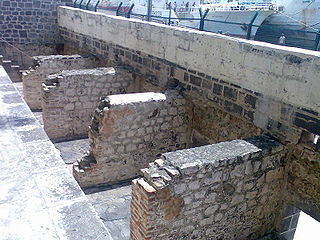
The Immigration Depot is a building complex located in Port Louis on the Indian Ocean island of Mauritius, the first British colony to receive indentured, or contracted, labour workforce from many countries. From 1849 to 1923, half a million Indian indentured labourers passed through the Immigration Depot, to be transported to plantations throughout the British Empire. The large-scale migration of the labourers left an indelible mark on the societies of many former British colonies, with Indians constituting a substantial proportion of their national populations. In Mauritius alone, 68 percent of the current total population is of Indian ancestry. The Immigration Depot has thus become an important reference point in the history and cultural identity of Mauritius.

Agriculture in Montserrat, a British Overseas Territory, is a small industry that is heavily influenced by the volcanic activity of the Soufrière Hills. Historically a major producer of sugar and tobacco, the eruptions of the Soufrière Hills between 1995 and 1997 severely damaged infrastructure across a large part of the island. Much of the arable land was destroyed during eruptions or now falls within an "exclusion zone", leaving only limited sections on the northern region of the island usable for cultivation.
Irish people in Jamaica or Irish Jamaicans, are Jamaican citizens whose ancestors originated from Ireland. If counted separately, Irish people would be the second-largest reported ethnic group in Jamaica, after Jamaicans of African ancestry.
A slave plantation was an agricultural farm that used enslaved people for labour. The practice was abolished in most places during the 19th century.
Buckra or Backra is a term of West African origin. It is mainly used in the Caribbean and the Southeast United States. Originally, it was used by slaves to address their white owners. Later, the meaning was broadened to generally describe white people.
Migration from Ireland to Saint Kitts and Nevis in the West Indies began in the 1620s, when the islands of Saint Kitts and Nevis became part of the British Empire, and continued into the 18th century.
Irish Caribbeans are people who live in the Caribbean, but were born in Ireland, or are descended from people who were born in Ireland. Irish Caribbeans include:
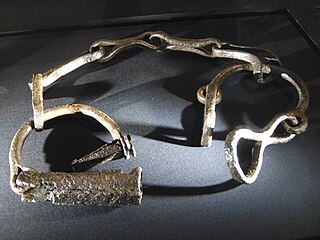
Slavery had already existed in Ireland for centuries by the time the Vikings began to establish their coastal settlements, but it was under the Norse-Gael Kingdom of Dublin that it reached its peak, in the 11th century.

Irish indentured servants were Irish people who became indentured servants in territories under the control of the British Empire, such as the British West Indies, British North America and later Australia.
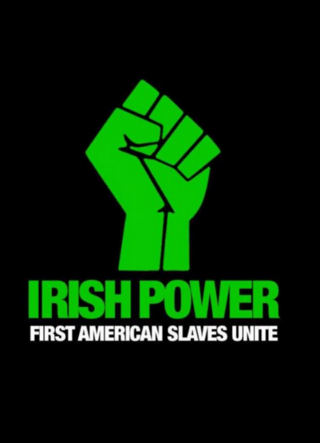
The Irish slaves myth is a fringe pseudohistorical narrative that conflates the penal transportation and indentured servitude of Irish people during the 17th and 18th centuries, with the hereditary chattel slavery experienced by the forebears of the African diaspora. Some white nationalists, and others who want to minimize the effects of hereditary chattel slavery on Africans and their descendants, have used this false equivalence to deny racism against African Americans or claim that African Americans are too vocal in seeking justice for historical grievances. It also can hide the facts around Irish involvement in the transatlantic slave trade. The myth has been in circulation since at least the 1990s and has been disseminated in online memes and social media debates. According to historians Jerome S. Handler and Matthew C. Reilly, "it is misleading, if not erroneous, to apply the term 'slave' to Irish and other indentured servants in early Barbados". In 2016, academics and Irish historians wrote to condemn the myth.

The Montserrat slave rebellion of 1768 was an unsuccessful slave rebellion in the English colony of Montserrat in the Caribbean Sea that took place on 17 March 1768.
